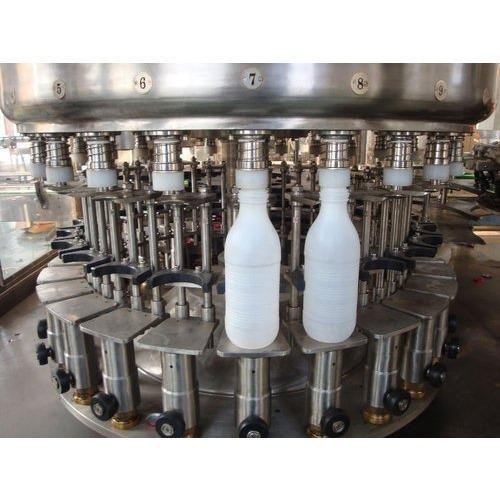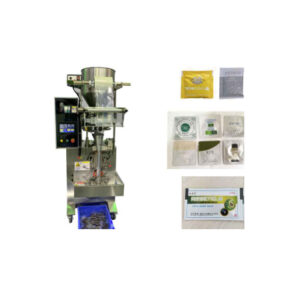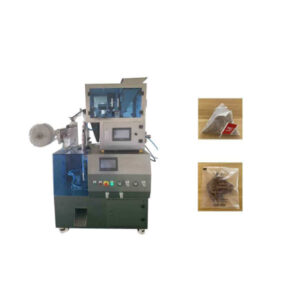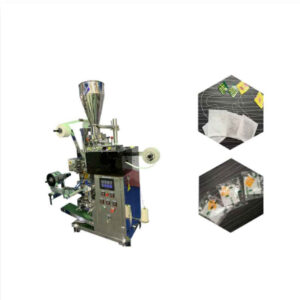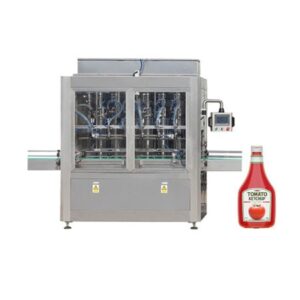Description
| Parameter | Description |
|---|---|
| Capacity | (e.g., liters per hour) |
| Filling Accuracy | (e.g., +/- 0.5% of target volume) |
| Material | (e.g., stainless steel) |
| Power Supply | (e.g., 220V, 50Hz) |
| Power Consumption | (e.g., 3 kW) |
| Control System | (e.g., PLC with touchscreen interface) |
| Filling Volume Range | (e.g., 100ml – 1000ml) |
| Filling Speed | (e.g., 1000 bottles per hour) |
| Bottle Size Range | (e.g., 200ml – 2000ml) |
| Cleaning System | (e.g., CIP system) |
| Sterilization Method | (e.g., UV sterilization) |
| Dimensions (L x W x H) | (e.g., 2000mm x 1500mm x 1800mm) |
| Weight | (e.g., 800 kg) |
| Compliance | (e.g., CE, FDA) |
| Additional Features | (e.g., automatic cap placement, bottle orientation) |
In the dairy sector, efficiency, precision, and cleanliness are key. Besides contributing to the productivity of the overall dairy sector, milk-filling machines also play a critical role in ensuring this is achieved through the following methods. Milk-filling machines have become inevitable equipment in small-scale dairies to large industrial plants. This complete guide examines different aspects of milk-filling machines including types, working processes, applications, functions, benefits, and future trends.
Types of Milk Filling Machines
Automatic Milk Filling Machines
These are automatic milk-filling machines that come with advanced technology for the automation of the filling process. These machines can fill containers with an exact amount of milk without any human intervention since they can measure accurately and fill a predetermined volume of milk. They apply best for high-volume production lines that offer more control over fill levels thus minimizing product wastage as well as ensuring uniformity.
Semi-Automatic Milk Filling Machines
This involves manual input by operators during the process such as placing containers below dispensing nozzles and then starting up the fill cycle. Semi-automatic fillers are less efficient than automated systems but cheaper hence ideal for small/medium-sized dairies.
Manual Milk Filling Machines
Manual milk-filling machines are simplified systems that depend on people to carry out the task of packaging them with liquids. Here, operators manually pour liquid into bottles making it suitable for low-volume manufacturing or even home usage where everything is done by hand. Manual fillers lack automatic controls but are affordable and user-friendly.
Working Process of Milk Filling Machines
The working principles of a milk bottle filler will vary depending on its type or technology used however there exist some common steps carried out during packaging;
Container Placement: The machine type will determine whether these containers will be placed manually or automatically under this nozzle.
Filling: The machine dispenses an appropriate quantity into every container after initiation of a particular cycle by pouring prescribed amounts into each pack from its headspace. Actuators and sensors enable automatic and semi-automatic machines to perform precise fillings.
Capping or Sealing: Some milk filling machines have inbuilt capping devices used to close the containers after being filled up so that they do not spill and maintain the quality of a product. The filling system of such machines is connected with automated capping systems making it easy during packaging.
Labelling and Packaging: Afterwards, these packed containers may enter the labeling, or packaging station where appropriate information viz a viz; brand name and expiry date on the label are marked onto them.
Applications of Milk Filling Machines
Milk filling machines can be utilized in various sectors within the dairy industry as highlighted below;
Dairy Processing Plants: For example, large-scale dairies use milk-filling machines when packing milk into bottles, cartons, or pouches. These are machines that work efficiently with high production volumes.
Small-Scale Dairies: Small-scale dairies and artisanal producers could utilize semi-automatic or manual types of milk bottle fillers for packing different quantities of milk in containers. They are flexible for start-ups and niche markets because of their cost-effectiveness.
Milk Collection Centers: To standardize raw milk collected from local farmers into packages suitable for transportation to processing plants, milk collection centers will use this filling equipment. These are meant to ensure accuracy while at the same time maintaining hygiene when handling unprocessed liquid substances before they get shipped off.
Retail Stores: Such businesses rely on this equipment to package it in consumer packs ready for sale via retail chains including supermarkets selling milk. These give consistent fills as well as improve efficiency throughout the process of packaging them.
Functions of Milk Filling Machines
Accurate Filling: Milk filling machines are designed to dispense precise volumes of milk into containers, ensuring consistency in product quality and packaging.
Hygienic Handling: From smooth surfaces to easy-clean components, these machines have been designed with hygiene requirements at their core to prevent any form of contamination.
Productivity Enhancement: Automation of the filling process has led to high productivity milk filling machines resulting in decreased labour costs and increased operational efficiency by increasing throughput.
Customization Options: Different sizes of containers, filling volumes, or adjustable speeds when it comes to some milk bottling systems can be availed which enables them to meet different packaging demands.
Benefits of Milk Filling Machines
Improved Efficiency: By reducing manual labor associated with repetitive tasks, automation reduces overall inefficiency within dairy operations as a whole.
Enhanced Product Quality: The accuracy in the amount filled plus the hygienic handling that is brought about by this machine ensures that products are good for consumption and can last even longer on shelves hence improved quality and shelf life.
Cost Savings: Production costs are reduced while profitability is maximized through minimized wastage and optimized resource utilization by using these appliances.
Compliance with Regulations: These machines help in compliance with regulations as they are made according to strict criteria for food safety standards thus mitigating offense risks or recalls.
Market Competitiveness: Dairy businesses using modern milk-filling machines stay ahead in the market by producing superior quality products consistently matching consumer preferences.
Future Trends in Milk Filling Machines
Integration of IoT and AI: In the future, these new generation milk filling devices might come with Internet of Things (IoT) support alongside Artificial Intelligence (AI) technologies that make it possible for real-time monitoring, predictive maintenance, and process optimization accordingly.
Modular and Flexible Designs: Manufacturers may develop modular milk-filling machines with flexible configurations to adapt to changing production requirements and accommodate different packaging formats.
Enhanced Sustainability: People feel concerned about eco-friendly models where the new machines will save energy, minimize waste material, and use recyclable packaging.
Advanced Hygiene Features: Advanced hygiene features such as UV sterilization, ozone treatment or even self-cleaning mechanisms may be incorporated in future milk-filling machines to ensure maximum sanitation.
Remote Monitoring and Control: Milk filling machines are now equipped with remote monitoring and control capability hence enabling managers to easily supervise operations from any location thus facilitating flexibility and responsiveness on the production floor.
Frequently Asked Questions
What is a milk-filling machine?
A milk filling machine is a specialized equipment used in dairy processing facilities to accurately measure and dispense milk into containers such as bottles, cartons, or pouches.
Tell me how milk-filling machines work.
Milk-filling machines are designed to direct the containers right under the nozzles of the filler, from where they are filled with predetermined volumes of milk. Depending on their nature, these may be manual, semi-automatic, or fully automatic.
What different types of milk-filling machines exist?
The three primary types include automatic, semi-automatic, and manual. Some are fully automated while others need human input and rely entirely on labor respectively.
What places utilize milk-filling machines?
Such machines as milk fillers can be found in dairy processing factories, small dairies, milk collection centers, and even retail stores as well as supermarkets for packaging it into various containers and then distributing it for sale.
What advantages come with using a milk-filling machine?
These comprise increased efficiency, better product quality, cost savings through less wastage, regulatory compliance, and enhanced ability to compete in the market.
Which features should I consider when buying a milk-filling machine?
Some of the most critical ones are precise measurements during the filling process, hygienically made for easy cleaning operation; and flexibility to handle various sizes of containers among other forms of packaging methods.
Is it easy to maintain a Milk Filling Machine?
Proper management ensures that these devices run efficiently for long periods. Regular maintenance which requires components inspection is therefore necessary to ensure that it is well-cleaned and lubricated periodically
What does the future hold for Milk Filling Machines?
Future trends will involve; IoT & AI integration for real-time monitoring and optimization; modular/flexible designs; augmented sustainability attributes and remote monitoring/control capabilities
How do I know if my packing of Milk is safe with a ‘filling’ machine?
Consequently ensuring that this machine is properly calibrated and sanitized according to set standards is crucial. Moreover, regular training should be given to all workers so that they are conversant with hygiene practices.
Where can I buy such equipment like a Milk Filling Machine from?
Among them are various manufacturers and suppliers worldwide. These can be obtained from online platforms, through industry trade shows, or from dairy equipment distributors. A reputable dealer with reliable equipment and after-sales support must be sought to make an informed decision.

